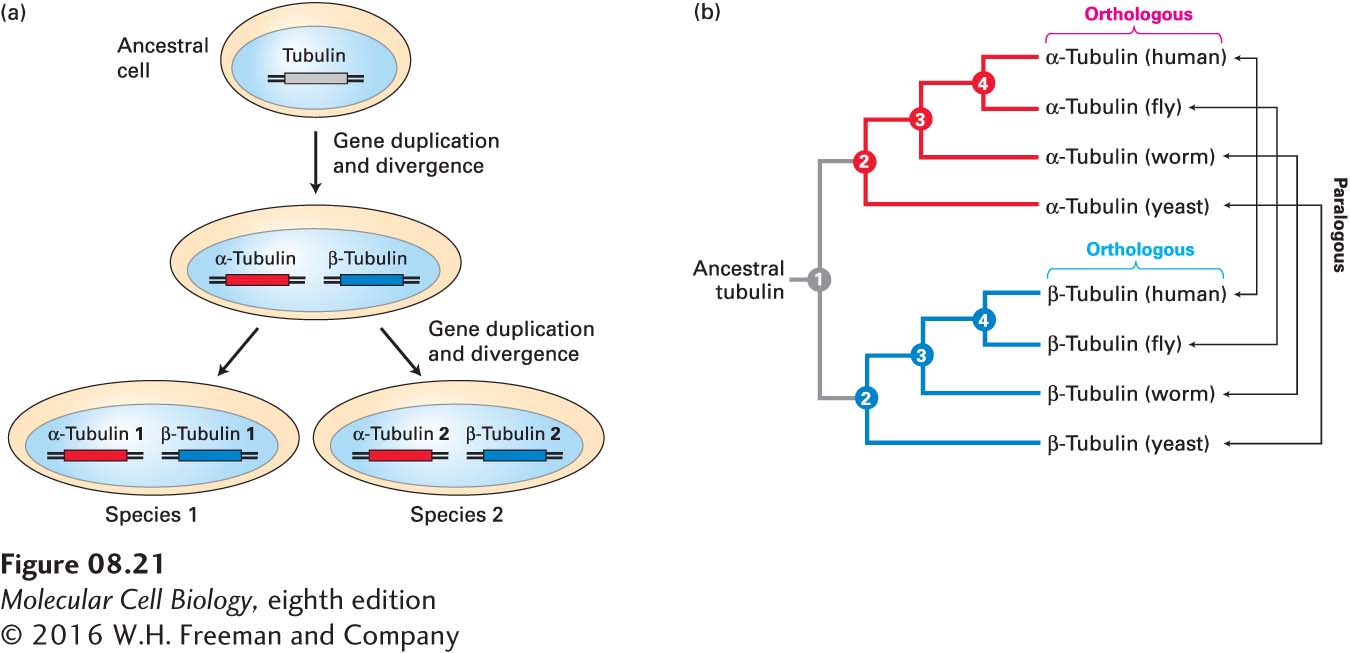
FIGURE 8- 21 Generation of diverse tubulin sequences during the evolution of eukaryotes. (a) Probable mechanism giving rise to the tubulin genes found in existing species. It is possible to deduce that a gene duplication event occurred before speciation because the α-tubulin sequences from different species (e.g., humans and yeast) are more alike than are the α-tubulin and β-tubulin sequences within a species. (b) A phylogenetic tree representing the relationship between the tubulin sequences. The branch points (nodes), indicated by small numbers, represent common ancestral genes at the time that two sequences diverged. For example, node 1 represents the duplication event that gave rise to the α-tubulin and β-tubulin families, and node 2 represents the divergence of yeast from multicellular species. Braces and arrows indicate, respectively, the orthologous tubulin genes, which differ as a result of speciation, and the paralogous genes, which differ as a result of gene duplication. This diagram is simplified somewhat because flies, worms, and humans actually contain multiple α-tubulin and β-tubulin genes that arose from later gene duplication events.
[Leave] [Close]